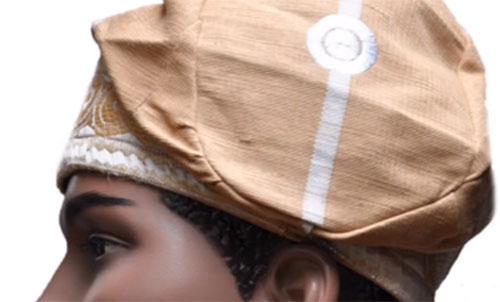 In Africa, there are numerous types of traditional textiles produced and used by the local tribes since the beginning of time. In this material, we’ll look at the hand-woven cloth invented by the Yoruba people – the aso oke fabric. The locals in Nigeria and some neighboring territories not only create traditional and ceremonial pieces of clothing from aso oke cloth but even make cute contemporary casual wear from this authentically African fabric.
In Africa, there are numerous types of traditional textiles produced and used by the local tribes since the beginning of time. In this material, we’ll look at the hand-woven cloth invented by the Yoruba people – the aso oke fabric. The locals in Nigeria and some neighboring territories not only create traditional and ceremonial pieces of clothing from aso oke cloth but even make cute contemporary casual wear from this authentically African fabric.
Aso oke cloth is a hand-woven fabric traditional for Yoruba people (they dwell in Nigeria and Benin). Originally, this cloth was used by the higher-class people. Also, the locals traditionally sewed festive and ceremonial garments from aso oke, the outfits worn for engagements, family holidays, naming ceremonies, funerals, and other different special occasions. But today, it’s often used for casual wear.
The African folk clothes made from aso oke fabric are male gowns called “agbada”, female wrappers “iro”, and headdresses “fila” and “gele”, etc.

Male fila cap made from aso oke cloth of sanyan type
The yarn for aso oke cloth can be cotton, silk, or even synthetic threads (for instance, modern garments). Some of these threads are locally grown, others are bought from the neighboring territories.
There are many different types of aso oke fabric (depending on the color, pattern, style of weaving, type of yarn, etc.). Here are just a few of them:
- etu – dark-indigo colored cloth with little white or lighter stripes;
- sanyan – light-brown cloth with white stripes made from cotton and silk;
- alaari – bright fabric woven from cotton and sometimes adorned with shiny threads to make it look more eye-catching;
- eya – lace-like weaving patterns are used to create this type of cloth;
- takunsi – very bright, multicolored fabric with various patterns;
- kente-oke – colorful fabric that looks very much like the kente cloth;
- damask – ornate and expensive-looking fabric with large patterns;
- and others.
The color palettes and patterns on aso oke clothing are diverse. There are plenty of variations – designs typical for men’s garments and women’s ones, different patterns for certain occasions, regional variations, and so on.

Etu type of aso oke fabric – beautiful indigo-dyed cloth with striped patterns
The most beautiful and fancy aso oke is sewn very skillfully, has a lace-like texture, and is decorated with openwork. This type of fabric is called “prestige cloth”.
The aso oke fabric was rather costly. In the past, the amount of cloth and patterns on it indicated the wealth and status of the wearer. Nowadays, this isn’t always the thing because people started to produce it industrially and use this fabric for casual clothes. Modern African fashion designers often use aso oke to create contemporary garments available and beloved by people far beyond Yoruba tribes.


